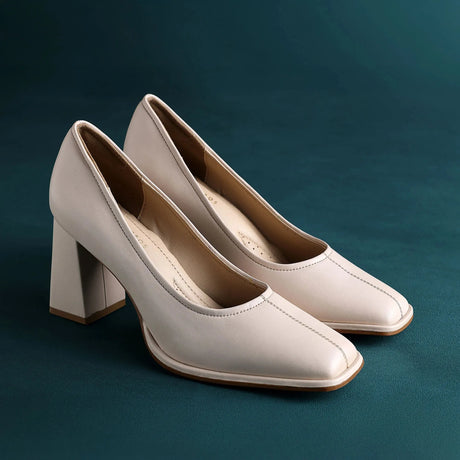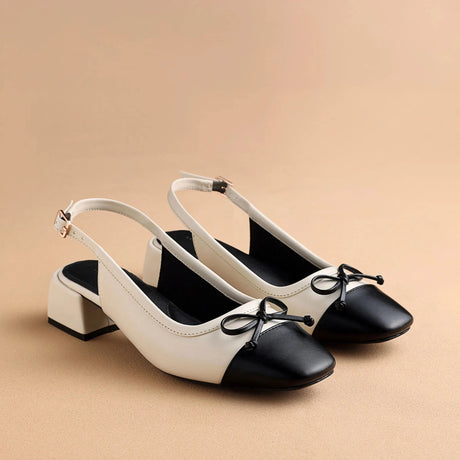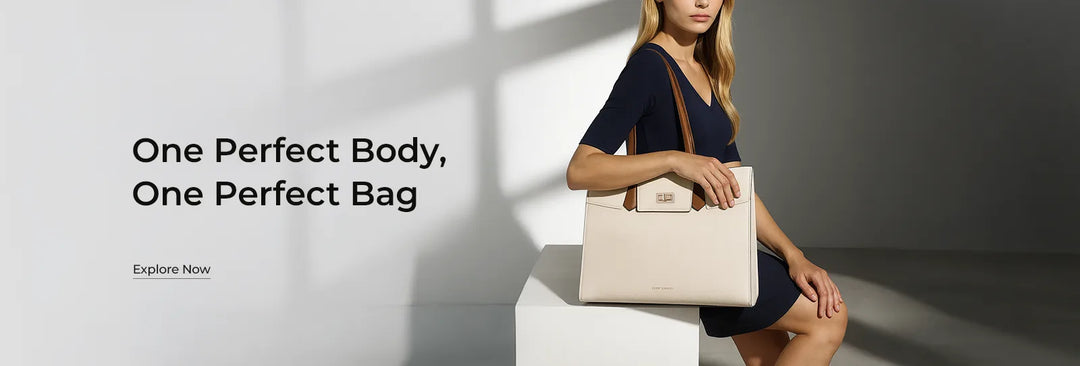How to Spot a High-Quality Handbag: Features to Look For
For shoppers who appreciate durability, craftsmanship, and timeless style, identifying quality handbags is essential. Whether you’re investing in a luxury piece or a well-made everyday bag, understanding what distinguishes a high-quality handbag from a mediocre one can save you money, frustration, and disappointment. A handbag isn’t just a functional accessory - it’s a statement of your taste and an investment that can last for years with the right care.
In this blog, we’ll guide you through the key features to look for when identifying quality handbags. From craftsmanship details and superior materials to hardware durability and stitching techniques, we’ll help you make informed decisions before making your next handbag purchase.
Why Does Handbag Quality Matter?
Before diving into the features, it’s important to understand why handbag quality is worth scrutinizing. A high-quality handbag offers:
-
Longevity: Better materials and construction mean the bag will withstand daily wear without quickly deteriorating.
-
Aesthetic Appeal: Quality craftsmanship results in cleaner lines, refined finishes, and a polished look.
-
Functionality: Durable hardware and thoughtful design improve usability.
-
Value for Money: Investing in quality often means fewer replacements and more satisfaction over time.
Whether shopping for an investment piece or a daily carry, recognizing quality helps you choose handbags that complement your lifestyle and style goals.
Signs of Superior Handbag Craftsmanship
The craftsmanship behind a handbag reveals the skill and attention to detail invested in creating it. Here’s what to examine:
1. Even and Tight Stitching
One of the clearest signs of quality is the stitching. Inspect the seams closely:
-
Consistency: Stitches should be even, uniform, and tightly spaced. Uneven stitches or loose threads signal rushed or careless work.
-
Reinforcement: Areas prone to stress - such as the handles, zippers, and corners - should have reinforced stitching, sometimes with double or triple rows.
-
Invisible Seams: High-end bags often feature hidden seams that contribute to a sleek finish.
Good stitching not only ensures durability but also speaks to the maker’s precision.
2. Clean Edges and Seam Finishing
High-quality handbags feature clean, sealed edges that prevent fraying or peeling:
-
Edge Painting or Sealing: Leather edges may be coated with a special paint or sealant for smoothness and protection.
-
Bound Seams: The interior seams are often bound with fabric or leather strips, enhancing strength and aesthetics.
-
No Raw Cuts: Rough or raw edges inside or outside the bag indicate lower craftsmanship.
Check edges thoroughly - well-finished edges are a hallmark of superior design.
3. Handcrafted Details
Luxury handbags often showcase hand-stitched elements, embossed logos, or hand-painted finishes that machine production can’t replicate:
-
Hand Stitching: Visible only upon close inspection, it offers durability and a bespoke feel.
-
Embossing and Engraving: Crisp, well-defined logos or patterns are signs of expert artisanship.
-
Hardware Assembly: Attachments like buckles or clasps should be firmly fixed, often with hand-set rivets or screws.
These artisanal touches add to the uniqueness and longevity of a handbag.
Materials That Indicate Handbag Quality
The materials used form the backbone of a handbag’s quality and influence its durability, feel, and overall look.
1. Vegan Leather
While genuine leather remains the gold standard in handbag materials due to its durability and elegance, vegan, faux or bonded leather are the new gold.
2. High-Quality Fabrics
For handbags made of fabric, quality materials include:
-
Canvas: Durable and often coated with waterproof finishes, as seen in many luxury brands.
-
Nylon or Polyester: High denier counts indicate stronger, more durable fabric.
-
Lining Fabric: The interior lining should be smooth and resistant to wear, often made from satin, microfiber, or cotton blends.
Avoid bags with flimsy or cheap-feeling fabrics as they are prone to tearing.
3. Hardware Durability
Hardware - the zippers, clasps, buckles, and chains - plays a crucial role in both the bag’s aesthetics and functionality.
-
Material: Look for metal hardware made of brass, stainless steel, or zinc alloys. Cheap plastic or lightweight metals can break easily.
-
Finish: High-quality hardware is usually coated to resist tarnishing and corrosion; it should feel heavy and solid.
-
Functionality: Test zippers for smooth operation, clasps for secure locking, and chains or handles for sturdy attachment.
-
Brand Detailing: Some luxury brands engrave logos on hardware, which should be sharp and consistent.
Hardware issues are common in lower-quality bags, so careful inspection can save you future hassles.
Assessing Handbag Durability Before Purchase
Besides materials and craftsmanship, the handbag’s overall durability depends on design and construction choices.
1. Handle and Strap Strength
Since handles and straps bear the weight of the bag’s contents, their strength is vital:
-
Attachment: Handles should be sewn or riveted securely. Look for double stitching or metal hardware attaching the straps.
-
Material: Leather or reinforced fabric straps last longer than thin or glued ones.
-
Comfort: Padded or wide straps distribute weight evenly, reducing strain.
Test the straps by pulling gently to check for any give or weakness.
2. Weight Distribution and Base Structure
A quality handbag maintains its shape and balance regardless of contents:
-
Structured Base: Bags with reinforced or padded bases resist sagging and wear.
-
Feet: Metal studs or feet on the base protect the bag from dirt and damage when placed on surfaces.
-
Interior Compartments: Well-organized interiors prevent contents from damaging the bag and improve usability.
Assess how the bag feels empty and when loaded to gauge structural integrity.
3. Lining and Interior Workmanship
The inside of the handbag often reflects the overall quality:
-
Smooth Lining: Should be tightly sewn without loose fabric or puckering.
-
Pockets and Zippers: Interior compartments and zippers should be well-placed and functional.
-
Clean Seams: Just as with the exterior, interior seams should be finished and durable.
A flimsy or torn lining signals poor construction that can affect the bag’s lifespan.
Additional Tips for Identifying Quality Handbags
1. Brand Reputation and Reviews
While craftsmanship is key, brand reputation offers valuable insight:
-
Established Brands: Often maintain strict quality control and use superior materials.
-
Customer Feedback: Reviews and testimonials reveal real-world durability and user satisfaction.
-
Warranty and After-Sales Service: High-quality bags usually come with warranties or repair options.
2. Price Point and Value
High-quality handbags typically command higher prices, but this isn’t a strict rule:
-
Avoid Cheap Imitations: Extremely low prices often indicate subpar quality.
-
Cost-Per-Wear: Consider the handbag’s longevity and versatility when evaluating cost.
-
Investment Pieces: Sometimes spending more upfront saves money over time.
3. Authenticity Checks
For designer handbags, ensure authenticity by checking:
-
Serial Numbers: Many luxury bags have serial or model numbers.
-
Packaging: Authentic bags come in high-quality dust bags and boxes.
-
Certificates: Some brands provide authenticity cards or documentation.
Caring for Your Quality Handbag
Identifying a quality handbag is just the first step; proper care ensures it lasts:
-
Regular Cleaning: Use appropriate cleaners for leather or fabric.
-
Storage: Store handbags in dust bags in a cool, dry place; avoid hanging by straps.
-
Avoid Overloading: Excess weight strains straps and seams.
-
Professional Repairs: Address wear and tear early with professional help.
Conclusion
Knowing how to identify quality handbags empowers you to make smart, confident purchases that enhance your wardrobe and stand the test of time. By focusing on superior craftsmanship, premium materials, durable hardware, and thoughtful design, you can spot handbags that offer true value.
Next time you shop, inspect stitching, feel the material, test the hardware, and consider the brand’s reputation. These small steps will help you choose handbags that not only look beautiful but also serve you well for years to come.
Invest in quality - because a well-crafted handbag is more than an accessory; it’s a trusted companion in your daily life.







